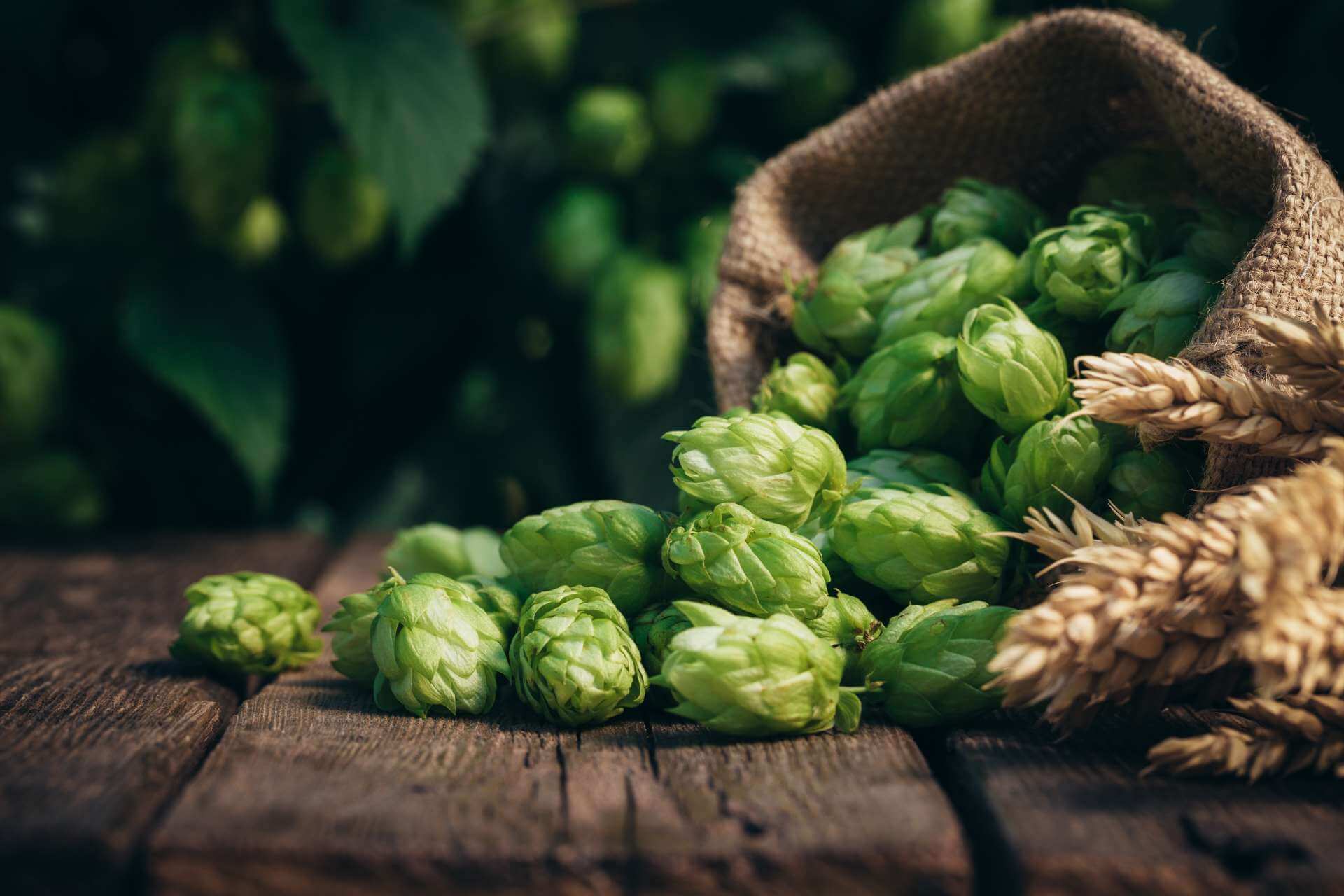
Beer
Beer’s principal ingredients are cereals, water, yeast, and hop (by which feminine flowers donate to beer its topical bitter flavour).
The productive processes of beer are subdivided into:
- Malting: the barley, in malting is processed into various types of malt, which will characterize the beer for aroma and colour;
- Maceration: the malt is left to soak for 24 to 36 hours, alternating immersion and dry phases;
- Germination: the barley is stirred and continuously ventilated in special germination boxes in order to transform starch and proteins into molecules that can be used by yeast for fermentation;
- Drying: the product is heated slowly in order to complete the germination process and allow the development of malt flavourings and colours;
- Roasting: the barley is transferred into a drum with a certain saturation of the roasting. The degree of roasting affects aroma and colour as well;
- Milling: the compound is ground to facilitate the solubilisation of malt in cylinder or hammer mills;
- Mashing: the ground malt is mixed with water and it is transferred in vats, giving life to the must. There are two types od mashing: infusion o decoction. Afterwards, it is filtered to separate soluble and insoluble residues from the liquid phase. The must is then cooked and brought to boil. In this phase the hops are added.
- Fermentation: the hot must is filtered and cooled to high (15-2) or low (6-10) fermentation temperature. During this phase the yeast is added.
- Maturation: the beer must rest at a certain temperature so that its components acquire the right balance. This phase can last from a few weeks to a few months.
- Bottling: the beer is packaged only after pasteurization. If tis does not happen, it is called ‘raw’ beer.
- Transport of goods.
The consumed and produced quantities of beer all around the world are huge: millions of thousands a year. At the first place of the global classification the higher beer consume per capita is in Czechoslovakia (188.6 litres), followed by Austria (107.8 litres) and Romany (100.3 litres). The beer consume in Italy has passed 20 million of hectolitres compared to 2019.
The country that produced most beer is China, followed by United States, Brazil, Mexico, and Germany.
Process and Product Innovation
The shift to the Industry 4.0 is a moment of deep change and innovation capable to disrupt all the sectors.
The industry 4.0 is considered as a new Industrial Revolution that appears to be even more disruptive of the previous ones. It is seen as such because it is born from the convergence of the IT and OT technologies to create a digit...
Supply chains involved:
Plant-based Beverages Coffee Cereals Chocolate Canned Foods Beer Dairy Products Nuts Food Supplements and Nutraceuticals Milk Plant oils Fruit and Vegetables Pasta Meat Baking products Sweet products Rice Cold Cuts and Cured Meats WinerySupply chains involved:
BeerSupply chains involved:
Beer